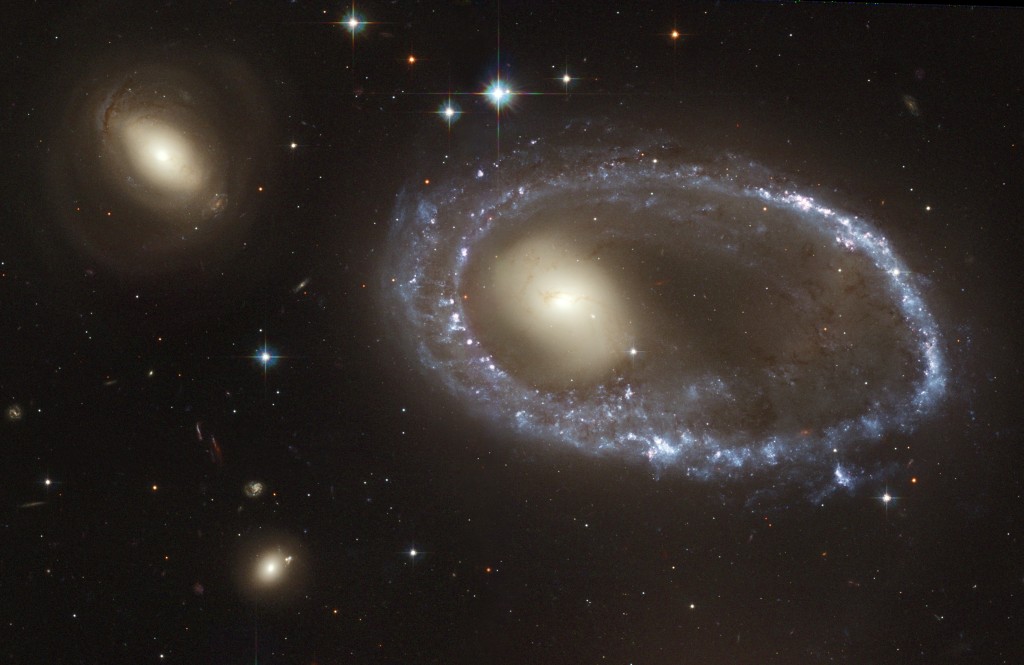Galaxy

Image courtesy Nasa.
If enough hydrogen is available in a body eventually fusion occurs and this is how the Stars formed with the remaining gases etc... forming the planets. If you then think about the size of space and all the stars being formed and the forces of nature happening on larger and larger scales you start to get the idea that a galaxy had to come into being as all the stars in it are bonded together through the invisible force of gravity. The spiral structure of most galaxies is the same principle of our own Solar System. Gravity and magnetism creates the spin of objects around another that we see right down to the atomic scale.
The different types of galaxies that have been classified are elliptical, spiral, barred spiral and irregular.
| Galaxy in other languages:- |
| Cebuano: | galaxiya |
| Chinese: | xīngxì 星系 |
| French: | f galaxie |
| German: | f galaxis |
| Greek: | m γαλαξίας |
| Indonesian: | galaksi |
| Italian: | f galassia |
| Japanese: | seiun 星雲 |
| Nederlands: | n melkwegstelsel |
| Norwegian: | m galakse |
| Polish: | f galakyka |
| Portuguese: | f galáxia |
| Spanish: | f galaxia |
| Tagalog: | kalawakan |
| Turkish: | galaksi, gökada |